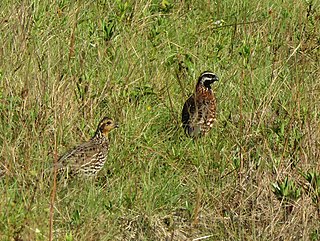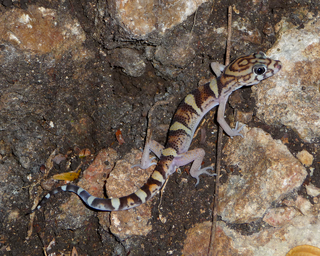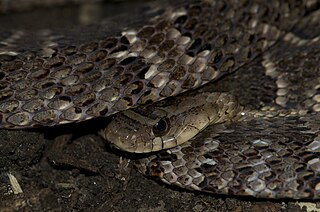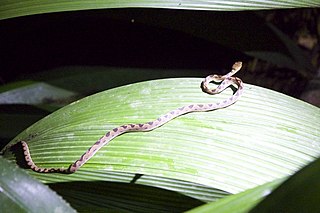Edward Harrison Taylor was an American herpetologist from Missouri.

Terciopelo is a species of pit viper found at low to moderate elevations in northeast Mexico and Central America, and into South America where it is known from elevations up to 2600 meters in the Colombian and Ecuadorian Andes, as well as into Venezuela. With a mass of up to 6 kilograms (13 lb) and a maximal length of 2.5 metres (8.2 ft), the terciopelo is among the largest pit vipers. It is light to dark brown in color, often with yellow zig-zag-shaped lines on each side of the body. Dubbed "the ultimate pit-viper" for its large size, fangs and venom yield, it has a fearsome reputation, responsible for the most snakebites within its range because of its defensive temperament and proximity to human residence. However, like other venomous snakes, it avoids confrontation with humans whenever possible. No subspecies are currently recognized.

Ficimia is a genus of colubrid snakes commonly known as hooknose snakes or hook-nosed snakes, which are endemic to North America. There are seven species within the genus.

Ficimia streckeri, also commonly known as the Mexican hooknose snake, the Tamaulipan hooknose snake, and the Texas hook-nosed snake, is a small species of snake in the family Colubridae. The species is native to northeastern Mexico and adjacent southern Texas.

Gyalopion canum, commonly known as the Western hooknose snake, is a species of small colubrid snake endemic to the deserts of the United States and Mexico. It is sometimes referred to as the Chihuahuan hook-nosed snake because it is commonly found in the Chihuahuan Desert.

Crotalus oreganus, commonly known as the (northern) Pacific rattlesnake, is a venomous pit viper species found in western North America from the Baja California Peninsula to the southern interior of British Columbia.

The Yucatan brown brocket is a small species of deer native to Central America.
The slender harvest mouse(Reithrodontomys gracilis) is a species of rodent in the family Cricetidae. A small mouse-like rodent distributed throughout a portion Central America.

The Yucatan bobwhite or black-throated bobwhite is a species of bird in the family Odontophoridae. It is found in Belize, Guatemala, Honduras, Mexico, and Nicaragua. Its natural habitats are subtropical or tropical dry shrubland, subtropical or tropical seasonally wet or flooded lowland grassland, coastal mangroves and heavily degraded former forest. A specific example of occurrence is the Petenes mangroves of the Yucatan.

The singing quail is a species of bird in the family Odontophoridae, the New World quail. It is found in Belize, El Salvador, Guatemala, Honduras, and Mexico.
The northern banana salamander, also known as common dwarf salamander or rufescent salamander, is a species of salamander in the family Plethodontidae. It is found in the Atlantic slopes of Meso-America from San Luis Potosi, Veracruz, and northern Chiapas in Mexico continuing on to the southern part of Guatemala, Belize, and northern Honduras. However, its range south of Mexico is uncertain because the records may refer to other species.

The Yucatan nightjar is a species of nightjar in the family Caprimulgidae. It is found in Belize, Guatemala, Mexico, and Honduras.

The Yucatan amazon, also known as the yellow-lored amazon, Yucatan parrot or yellow-lored parrot is a species of bird in subfamily Arinae of the family Psittacidae, the African and New World parrots. It is found in Belize, Guatemala, Honduras, and Mexico.

The Yucatan flycatcher is a species of bird in the family Tyrannidae.

The Yucatan squirrel, originally named the Yucatan gray squirrel, also once named the Campeche squirrel, is a tree squirrel in the genus Sciurus found in the Yucatán Peninsula and adjacent areas. It is native to northern Belize, northeastern Guatemala, and southeast Mexico.

The Yucatan spider monkey, also known by its mayan name "Ma'ax", is a disputed subspecies of Geoffroy's spider monkey, and is one of the largest types of New World monkey. It inhabits forests of Mexico, Guatemala, Belize, El Salvador and Honduras. It is a social animal, living in groups of 20-42 members. The subspecies is considered to be an endangered according to the IUCN Red list since 2020, mostly due to human threats.

The Yucatán banded gecko is a species of geckos found in Mexico, Guatemala, and Belize.

Geophis sanniolus, commonly known as the pygmy snail-eating snake or the pygmy snail sucker, is a species of small snake in the family Colubridae. The species is endemic to Central America and southeastern Mexico.

Xenodon rabdocephalus, commonly known as the false fer-de-lance, is a species of venomous rear-fanged snake in the family Colubridae. The species is native to Central America and northern South America. There are two recognized subspecies.

Leptodeira septentrionalis, the northern cat-eyed snake, is a species of medium-sized, slightly venomous snake, found from southern Texas to Costa Rica.


















